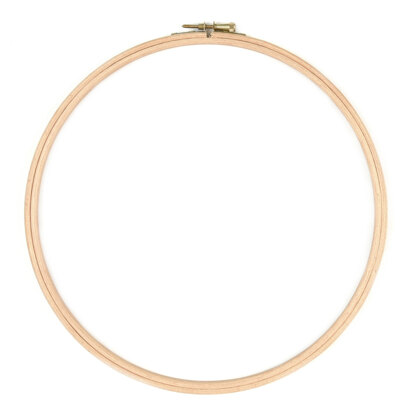How to frame your cross stitch and embroidery projects
Published on 4 February 2020 By Holly Butteriss 2 min read
You've done all the hard work and now you want to display your lovely stitched masterpiece, but how? Amazing maker Mollie from Wild Olive has made it super simple to figure out how to frame your cross stitch and embroidery projects with a step-by-step guide! And for even more wonderful stitch-spiration, you can check out Mollie's gorgeous Instagram too!
How to frame a cross stitch
After you finish a piece of stitching, how do you show off that work? Learn how to frame your embroidery or cross stitch project in a way that will last for years to come. Whether you use an inexpensive wooden embroidery hoop or a more traditional picture frame, your needlework will shine!
Tools and materials
There are lots of methods for framing stitchery, but in this tutorial, we'll show you two ways that both show off your hard work and preserve it well. Many stitchers use glue to hold their finished cross stitch or embroidery in a hoop, and although this does work, it has its drawbacks. First, if the glue soaks through or ends up in the wrong place, it can ruin your work. It also permanently attaches the fabric to the hoop making it difficult to clean or restretch the needlework. By stitching or pinning the work in place, you can more easily keep your stitchery looking fresh. Ready to get your latest project framed and looking fab?
How to frame a project in a embroidery hoop

When you think of displaying embroidery or cross stitch, probably one of the first things that comes to mind is an embroidery hoop. That's because this helpful tool is also a handy way to frame your finished project! Wooden embroidery hoops are inexpensive and easy to customise. Plus, they're designed to hold fabric, so that makes them easy to work with.
1
To frame your stitching in a hoop, start with a finished piece of embroidery or cross stitch. The fabric should be at least 4 cm (1-1/2 in) larger on all sides than the hoop. Press your stitching from the back to remove any large wrinkles in the fabric.
2

Separate the pieces of the hoop and use the inner hoop as a guide. Make sure your design is centred within the hoop, then cut the fabric around the hoop shape. The cutting doesn't need to be exact, but it will look nicer if it's even all around.
3

Place the fabric in the embroidery hoop. Use embroidery thread or perle cotton to stitch around the fabric edge with large running stitches. Be sure to secure the beginning with a knot and a small tacking stitch to help secure the thread.
4

As you work around the hoop, pull the stitching to gather the fabric around the back of the hoop. When you reach the beginning of the stitching again, pull the thread to fully tighten the gathers. Secure the end with a tacking stitch and knot.
5

You can leave the back just as it is, which lets you see the back of the stitching. If you want to cover it more, cut a circle of felt that's the same size as the inner hoop. Whip stitch it to the back of the framed fabric.
Pro Tip
Want to enhance your hoop? Before framing, you can paint the hoop or wrap it in ribbon for a fancier finish!
How to frame a project in a traditional frame

When you want a more professional framing look for your stitching, a traditional frame is the way to go. For heirloom pieces, you may still want to consult a frame shop, but for most projects that you want to display, you can do it yourself easily with simple materials.
Before framing, you need to decide if you want your stitching under glass. You don't need glass to cover your embroidery or cross stitch, but if you would like it, it's best to use a mat or spacer to your stitches don't press up against the glass.
1

As with framing in a hoop, be sure to press your stitching and ensure that it's larger on all sides than the frame backing.
2

Cut a piece of foam board that matches the inside of the frame. The easiest way to do this is to measure the glass or backing piece.
3

Cut the fabric so that all the edges are even and several centimeters larger than the foam board. For larger pieces of embroidery or cross stitch, you may want a larger margin. Centre the foam board on the back of the stitched piece.
4

Wrap the fabric around the edge of the foam board and use stainless steel dressmaker pins to secure the fabric to the edge of the foam. Start on one side, then stretch the fabric and wrap it on the opposite side. Finish with the remaining two sides. Fold the corners down and place a pin in each corner.
5

Use acid-free tape to hold the fabric edges to the back of the foam board. Place the stitching-covered board in the frame, then replace the frame backing.
Most frames come with a hanger or stand already in place, which means all you need to do now is display your stitching or give it as a gift!
Pro Tip
Simple frames work just as well as more expensive frames, and you can customise them with paint or other decorative treatments just like you can with embroidery hoops.





